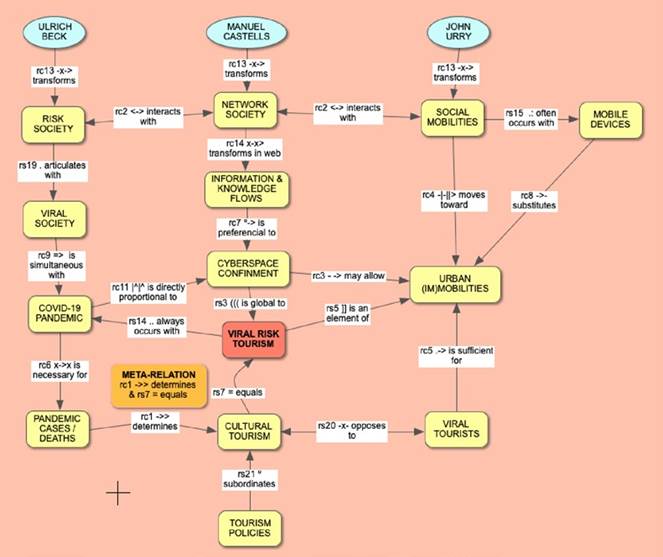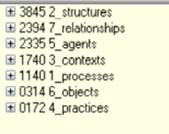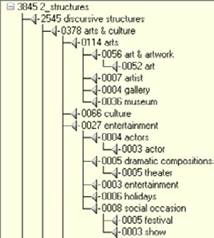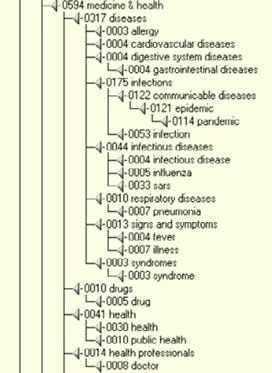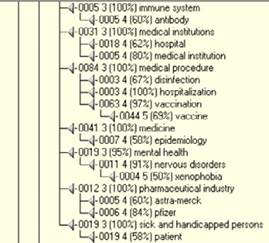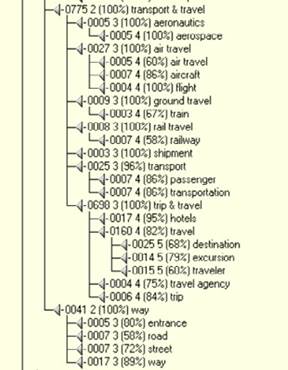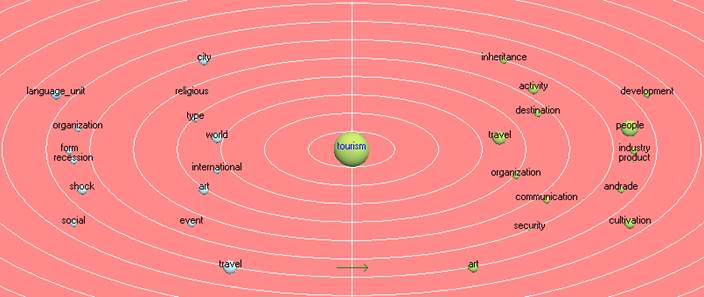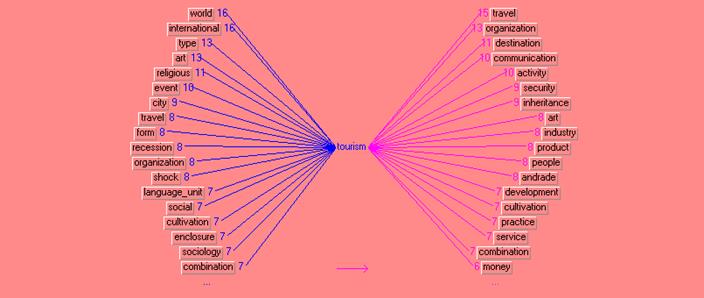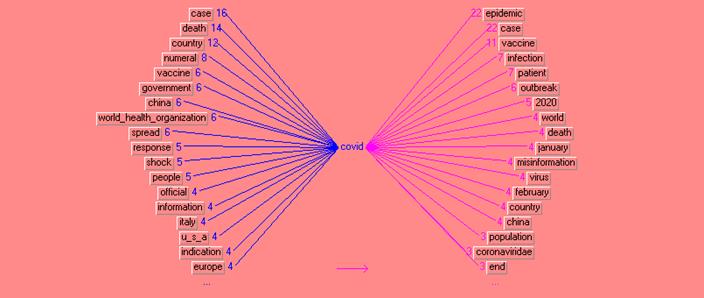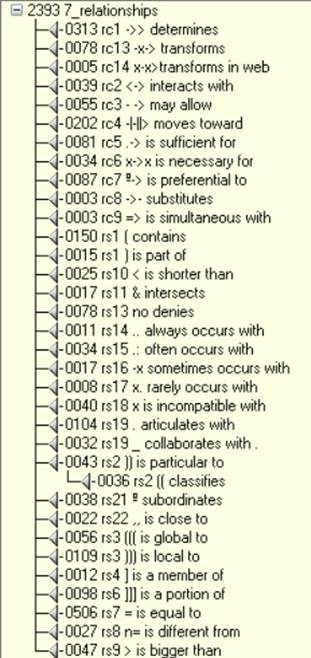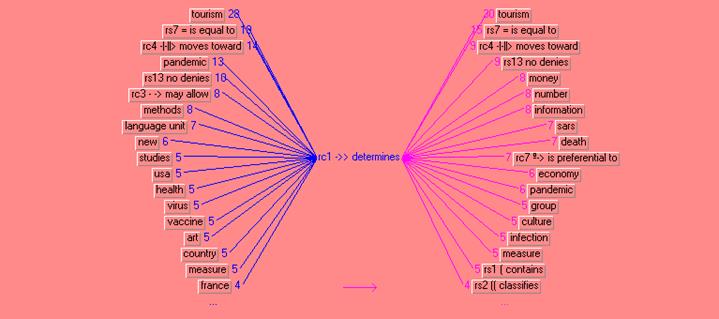1. Introduction: Is a Viral Society Emerging?
“Viral society” is a concept coined in previous studies undertaken by the author of the present text since the rise of the COVID-19 pandemic (Andrade, 2020, 2021; www.sites.google.com/view/viral-tourism-city). For example, the current pandemic crisis seems to indicate that coronavirus is deconstructing the current “network society” and reconstructing it in an emerging paradigm of society. Viral society is characterized, among other traits, by viral economies and technologies, viral politics and politicians, viral cultures and cults.
Studies about the COVID-19 pandemic confirm the relevance of various social dimensions of this process: on the economic realm (Gans, 2020); in what regards the “heroes of the pandemic” (Naik, 2020); or the dramatic situation in Italy in the first months of the outbreak (Rio, 2020).
The present text aims to reflect on such pandemic situations, articulated with a specific social process, tourism, especially regarding the risks that this activity may trigger. The aim is to construct a kind of mediating concept, “viral risk tourism”, which testifies to such reality. Both these phenomena, the pandemic and tourism, require appropriate intercultural mediations. Moreover, under the coronavirus pandemic, these mediations are gradually occurring in cyberspace.
Therefore, it is urgent to study the plethora of virulent processes that migrated towards sites pages, social networks, among others. A case study is presented that analyses the discourse produced about such intermediate and hybrid themes by digital social network Wikipedia, in close connection with concepts and ideas originated inside tourism studies. Hybrid discourse analysis (HDA) is a qualitative and quantitative method developed by the author, which is used for this analysis by applying one of its particular interpretive tools, the named “alphabet of interconceptual relations” (from now on referred to as “alphabet”), an interpretative tool supported by qualitative and statistical softwares, such as NVivo.
The structure of the present text reflects the preceding debate. Firstly, a brief sociological discussion about viral risk tourism is held. Secondly, the methodology concerning HDA is explained. Thirdly, a case study is presented on the Wikipedia discourse on the COVID-19 pandemic and tourism. HDA is reintroduced for this aim. Subsequently, this methodology is detailed via the analysis and interpretation of concepts and relations among terms, that may elucidate the underlying social phenomena. The method is better exemplified through a specific type of sociological network, the semantic-logical networks. Clarification and usefulness of HDA is demonstrated, more extensively and intensively, by specific and deeper relational analysis and interpretation. Finally, the conclusion exposes some considerations and recommendations. At the end of the article (see Appendix), a glossary summarises some core debated concepts and their main relations. However, the reader should take note that this is an incomplete scientific instrument, as the ideas in the text relate, necessarily, to an infinite, but not always undefined, intertextuality within the rhizome of all local and global social and sociological texts circulating worldwide.
2. The Sociological Debate on Viral Risk Tourism
In order to develop the debate on viral risk tourism, the present text applies the alphabet mentioned above in two ways: firstly, it defines some major theoretical relationships among sociological concepts forged by seminal authors, indicated below, who discussed social issues relevant for the analysis. The author does not intend to develop an extensive or intensive theoretical articulation among such authors. Rather, the aim is to give some quick examples of how this relational alphabet can be applied to such concepts within a coherent concept map, which constitutes a powerful method for connecting sociological ideas to raise pertinent questions and formulate verifiable and valid hypotheses (Figure 1).
For the development of such authors’ original ideas, see Ulrich Beck (1992, 2013, 2016), who reflected on the so-called “risk society”. This is a societal paradigm where risks are not just conjunctural but mainly structural, as they derive from the very essence of capitalism, a system that causes irreversible unbalances for the planet, such as climate change. Moreover, Manuel Castells (1996) circumscribes the “network society”, a social fabric dominated by networked information flows. And John Urry (1990, 2007), developed the ideas of “tourist gaze” and “urban mobilities”. The concept “mobilities” refers to everything that moves, locally and globally, and is transformed: capital, labor force, goods, information, and so forth.
These terms may be connected with the conceptualization discussed in the present reflection, for example, the notion of “viral risk tourism”, via relationships extracted from the alphabet. This alphabet defines 37 central sociological and logical relations: 23 relationships having a structural nature (here associated with social structures); and 14 connections of a conjunctural nature, testifying to social events and actions (Andrade, 2007a). Figure 1 gives some examples of these connections, where the codes corresponding to each of these relations are indicated. To demonstrate this interpretive strategy, on the left part of Figure 1, the concept “risk society” articulates with the notion “viral society”, as pandemics in general and the COVID-19 pandemic in particular constitute some of the major risks within the contemporary world. Likewise, “risk society” interacts with “network society” because the coronavirus caused the displacement of many social activities towards cyberspace and to digital social networks.
In what regards the notation used for the definition of relationships, for example, “r6 x->” is a code that signifies necessary condition, “r6” means the sixth relation of the alphabet, circumscribed within the “conjunctural sociological class”, and it is named “conjunctural relation 6”. Such link is expressed in Figure 1 as “r6 x-> necessary condition”, as it connects: (a) on one side, the “anterior concept” (causes, etc.) expressed via a sentence within natural language, for example, English (and inside the corresponding sociological proposition), in this case, “COVID-19 Pandemic”; and (b) on the other side, the “posterior concept” in a given sentence/proposition (effects, etc.), here named “pandemic cases/ deaths”, a social process illustrated, among others, through this text’s next part.
Secondly, this text draws on empirical analysis and interpretation of Wikipedia pages about “COVID-19 pandemic” and “tourism”, contextualized by the precedent theoretical reflections and through a case study, which applies the alphabet more systematically, by using both qualitative software, such as NVivo, and quantitative or statistical software.
3. Methodology: A Genealogy of Hybrid Discourse Analysis
A methodological strategy developed over several years of research, named HDA (Andrade, 2016), will be revisited here. This methodology includes and applies: (a) substantively, sociological concepts based on postcolonial studies, among other sociological schools, such as the notion of “hybrid”; and (b) epistemologically, traditional sociological methods, for instance, discourse and content analysis, hybridized with new media methods and techniques, for example, qualitative and quantitative discourse analyses vehiculated through softwares such as NVivo, and digital games or augmented reality. Here, only qualitative and quantitative discourse analyses will be exemplified.
For such purpose, HDA may use semantic-logical networks, which are conceptual networks organized by concepts and by logical relations-concepts, which are explained and exemplified below.
This method has been developed by the author for some decades (Andrade, 1985) on sociological networks, relations-concepts, among others: for example, an essay about the variable and changing nature of concepts, which take on different meanings depending on the social context of their enunciation. The relationships among concepts themselves can acquire great relevance within social interaction or inside social sciences writings. Through such social or sociological moves, these relations can be transformed into concepts of a new type, that is, relations-concepts (Andrade, 1991, 2002).
Moreover, HDA forged its foundations in the universal character of the hybrid. This concept has been the subject of several debates in recent decades, mainly within postcolonial studies (Appadurai, 2013; Bhabha, 2004; Canclini, 1995/2005; Said, 2008). In the present research, the hybrid was applied to the following objects of study, among others:
In what regards digital arts, in 2006, the notion of the hybrid was connected with net art and the construction of a new type of blog, the hybrilog. This is a hybrid blog, including and hybridizing several types of blogs, each based on a different medium (e.g., a text blog, a video blog, a video poetry blog, a digital art blog, etc.). The social sphere where blogs operate has been referred to as the blogosphere. Similarly, the social scape where hybrilogs circulate can be denominated the “hybridosphere”. Within the hybridosphere, for example, a blogart is a type of internet art that has the form and features of a blog, and the hybrilog may act as a blogart or as another kind of cultural and artistic hybridization (Andrade, 2006a). The hybrid may also be used as a resource for the practice of hybrid writing across multiple new genres of blogs, such as the hybrilog, or inside any other writ ing media (Andrade, 2006b).
The hybridizat. ion of literacies is another core concept used to understand and apply HDA (Andrade, 2011a, pp. 71-72, 2014). Literacy may be defined as a set of social reading and writing processes, including competencies and performances underlying a given mode of knowledge, in addition to the reading and writing regimes of a national or mother tongue. Articulating these literacies, an unprecedented way of knowing is emerging, hybridology, which focuses on the hybrid entities and identities that proliferate inside contemporaneity, especially within digital social networks. Examples are provided within a case study of audiences undertaken at the Berardo Collection Museum in 2010, through hybrid methodologies such as the multitouch questionnaire and the trichotomies game (Andrade, 2011b). Another illustration of hybrid sociological methods is the geoneologic novel (Andrade, 2007b, 2011b, p. 52). Or, in the cultural heritage area, a reflection on a sociology of ruins shows an example of hybrid methods through a case study undertaken in the context of digital social networks (Andrade, 2013). Another synthetic debate on hybridology, connected with the digital sphere and new media, can be found in Andrade (2015)
4. Analysis and Interpretation of the Wikipedia Corpus: Questions Within Hybrid Discourse Analysis
This case study is about the Wikipedia pages that debate “COVID-19 pandemic” and “tourism”, contextualized essentially by tourism studies.
The specific questions that HDA asks in order to interpret the corpus of the Wikipedia cyberspace pages are the following:
Which social processes emerge as the most relevant for the authors of those pages (and for their inherent social discourse), among the topics associated with COVID-19 and tourism?
Which are the core concepts that represent these social phenomena?
What social relations articulate such concepts?
It is possible to identify meta-relations, that is, relationships that associate other relationships?
These concepts and their relationships make visible pertinent sociological networks, which are defined as conceptual constellations that present a synthesis of the spoken/written social reality, in this case immersed within the selected Wikipedia pages. As observed below, such sociological networks may be specified into semantic-logic networks. These more particular networks translate, on one hand, the semantic meanings that social actors produce via sentences and words belonging to natural languages (English, Portuguese, etc.) into, on the other hand, (socio)logical propositions. For example, within a semantic-logic network, common words such as substantives are transformed into concepts; verbs are used as inter-conceptual relations; and daily sentences are modified into logical propositions.
5. Social and Sociological Dimensions of “Viral Risk Tourism” Concept
As described in the “Introduction” section, HDA may be detailed through various stages. The first step is conceptual. It considers not just the main concepts that organise the text but also their social and sociological dimensions. In the retained corpus “social structures” are the most frequent social dimension, with 3,845 mentions to the respective concepts, within the sentences of the text previously divided into (socio)logical propositions (see Figure 2).
Note that “relations among concepts” are the second more cited analytic class (2,394 occurrences inside the texts analyzed).
The process of “tourism” is in part understood sociologically as a social-economic, and cultural/discursive structure, inside the dimension “social structures”. Our corpus has 2,545 sentences referring to “discursive structures”, such as “arts and cultures” (378 propositions), a social structure more and more practised by contemporary cultural tourists (cf. Figure 3).
Another dimension widely represented in the corpus is the “social agent”, particularly their relationship with the social structures “medicine and health” (Figure 4 and Figure 5).
Note the 114 mentions to “pandemic” under the sub-category “infections”. And 33 references to “sars”, within the sub-class “infectious diseases”. In addition, “vaccination” registers 63 occurrences, and both the vaccines Pfizer and Astra-Merck receive four indications within the “pharmaceutic industry”.
Some other related concepts are visible inside the social sentences and sociological propositions within the corpus, for example, the social agents “doctor” (eight) and “patient” (19).
And what about the “tourism industry”, another pertinent social-economic structure in this case study? It belongs to a broader structural category, “transport and travel”. The sub-class more related to tourism is “trip and travel”, showing a frequency of 698 times within the corpus (Figure 6).
6. Semantic-Logical Networks
A second stage that details HDA is the following: concepts can be more deeply understood via their relationships inside semantic-logical networks, that translate social meanings into sociological signifiers.
Observing a semantic-logical network within Figure 7, it becomes clear that the central concept “tourism” is surrounded by other concepts through concentric circles that express a greater or lesser degree of association with the central concept.
Horizontally, this network conotates the conditional position of concepts within the full set of written sentences or all corresponding (socio)logical propositions. On the left, the antecedent concepts (causes, etc.) are found, such as “religious” for religious tourism, or “art” showing its influence, for example, in cultural tourism, and so forth. On the right, the subsequent concepts (effects, etc.) are visible, for example, “security” in tourism, or “communication” activated in tourism activities, and so forth.
A more complex sociological network is presented in Figure 8.
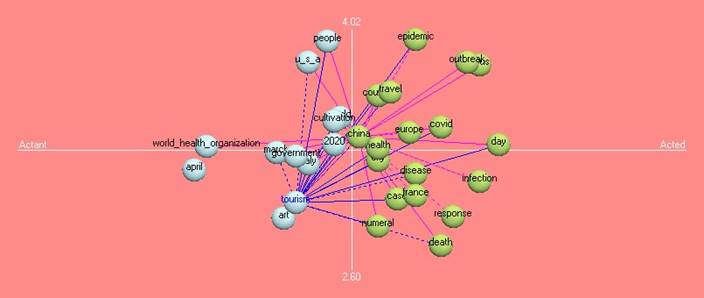
Figure 8 “Axial” semantic-logical network showing “tourism” and its actant and acted social processes/sociological concepts
Tourism is situated here as actant. This means a conditionality in relation to other social phenomena translated by concepts, the acted ones. For instance, in this corpus, “tourism” is treated as an influencing factor to other social processes, such as the pandemic outbreak of COVID-19. However, other processes/concepts also present this conditionality, for example, “people”, the “USA”, the global world space, the year “2020” and the month “March”, or some “governments”, or countries such as “Italy” where the pandemic began in the west. Curiously, “China” is placed in an ambiguous position, both as the cause of the pandemic and one of the countries that fought it more systematically.
As in the network in Figure 7, in Figure 8 concepts are represented by spheres. The lines show (socio)logical relationships among these concepts. Such a network also hybridizes qualitative and quantitative approaches.
Qualitative perspective. Observing more closely the actant/acted ratio, visible at the horizontal Xaxis, the notions to the left, noted in blue, mean anterior/antecedent/precedent/previous words in the totality of the social language’s sentences and within all of the (socio)logical propositions. The concepts to the right, in green, represent the posterior consequent/following/resulting notions, within all the social sentences and sociological propositions of the corpus.
Quantitative perspective. The relations for each concept are concentrated around the vertical Y-axis. The strongest relations are located at the top of the network, and the weakest at the bottom. A solid line indicates a frequent association, and a dotted line connotes an infrequent link.
Another configuration of a semantic-logical network can be seen in Figure 9, hybridizing qualitative interpretations and quantitative measurements
As for the qualitative approach, the relationships are now more ordered and distributed between two lists of concepts with the form of a star, the previous ones and the following ones, around the central concept.
Concerning the quantitative positioning, the social and semantic (qualitative) articulations are ordered (quantitatively) from the higher frequencies on top to the lower occurrences at the bottom. For example, “international” and “world” occur 16 times, which denotes the global relevance of tourism. By comparison, “city”, a more local social territory and a more specific sociological concept, appears only nine times.
Using HDA, it is also possible to conduct the interpretation deeper, by changing the social and conceptual “point of view”. For example, transiting from the central concept “tourism” (in Figure 9) into the core concept “covid” (Figure 10).
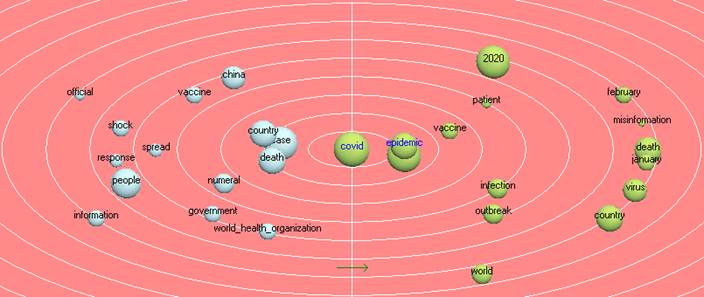
Figure 10 “Orbital” semantic-logical network including core concept “covid” and its satellite concepts
This movement is called “transitivity”. When the researcher inquires the corpus via the social process and the sociological concept “covid” as the core magnifying glass, other related concepts emerge, such as the vaccine as an influent weapon against COVID-19, infections in 2020 in patients and outbreak of cases as virus social effects.
Moreover, using the “actant/acted” prism (see Figure 11), the coronavirus is more directly related to tourism than in Figure 10.
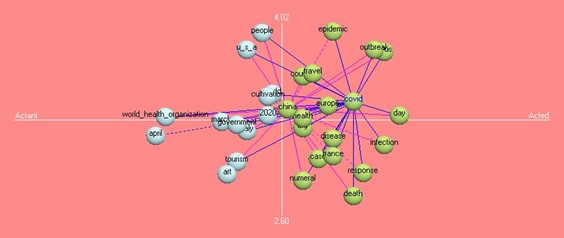
Figure 11 “Axial” semantic-logical network showing “covid’s” actant and acted social processes/sociological concepts
In fact, in Figure 11, as in Figure 8, the researcher can more clearly observe the connections among the concepts involved, through the lines that transit from one concept to another. Major relationships are again indicated by solid lines and in blue, and less important links are marked via dotted lines.
For example, the relationship between COVID-19 and China is very strong, with this country emerging as a decisive factor for the outbreak and spread of the pandemic. The relationships between China and the other social phenomena are testified via the connections in Figure 11, linking China to “covid”, “epidemic”, “outbreak”, “people”, “tourism”, “U.S.A.”, among others. Figure 12 quantifies those relationships.
Note that this interpretation strategy uses a concept, “China”, which mediates two other dimensions of reality: a social structure (“tourism”) and a social agent (“COVID-19”). This type of notion is named “mediating concept” or “concept-relation”. Thus, a mediating concept means a scientific term that intermediates (relates substantively) polar terms, such as opposite concepts in terms of social levels (Andrade, 1991, p. 270). For example, the macrosocial level represented by the structure “tourism” and the microsocial level manifest via COVID-19 social agent, as exemplified above.
Below are shown some examples of the occurrences mentioned above and relationships expressed in the actual text in English. They were extracted from the corpus of the selected Wikipedia pages, specifically concerning the relationship between China and COVID-19, within a global conjuncture where tourism travels contribute to aggravating the pandemic. This is just an illustration, as the citations are very numerous in the corpus. The following references can be found on the Wikipedia page about the COVID-19 pandemic. The numbers at the beginning of each indicate the order of the propositions
after analysis.
Here are some citations on the spread of the virus through tourists:
(11) On January 31, Italy had confirmed its first cases, two tourists from China.
(7) International tourist arrivals surpassed the milestone of 1 billion tourists globally for the first time in 2012.
(8) emerging source markets such as China, Russia, and the United States rather than from China where the virus originated.
(733) Former US President Donald Trump was criticized for referring to the COVID-19 as the “Chinese Virus” and “Kung Flu”
In what regards the pandemic situation in 2020:
(72) Nevertheless, the first reported death outside of China occurred on February 1 2020, in the Philippines.
(307) As of July 14 2020, there are 83,545 cases confirmed in China, excluding 114 asymptomatic cases
Official statements from the Chinese government agency on the virus:
(34) By January 12 2020, five genomes of SARS-Cov-2 had been isolated from Wuhan and reported by the Chinese Center for Disease Control and Prevention (CCDC) and other institutions
Animals as allegedly originating the virus:
(231) However, in May 2020, George Gao, the director of the Chinese Center For Disease Control and Prevention, said animal samples collected from the seafood market had tested negative for the virus
COVID-19 pandemic cases in China:
(59) An analysis in early 2020 of cases by age in China indicated that a relatively low proportion of cases occurred in individuals under 20.
(229) The following day, on December 31, The Who office in China was informed of cases of pneumonia of unknown cause in Wuhan.
(229) According to official Chinese sources, the early cases were linked mostly to the Huanan Seafood Wholesale Market.
(236) On January 20, China reported nearly 140 new cases in one day.
(247) By March 26, the United States had overtaken China and Italy with the highest number of confirmed cases in the world.
(307) As of July 14 2020, there are 83,545 cases confirmed in China, excluding 114 asymptomatic cases.
Deaths in China caused by coronavirus:
(311) However, throughout the pandemic, multiple sources have cast doubt upon the accuracy of China’s official numbers for deaths and infections of Covid-19 during the initial outbreak.
(407) On March 19 2020, Italy overtook China as the country with the most COVID-19-related deaths in the world after reporting 3,405 fatalities from the pandemic.
7. Relational Analysis and Interpretation
A third big step of HDA is mainly relational. An application of the alphabet is presented in the next pages. In the corpus retained, 2,393 occurrences of relations extracted from this (socio)logical alphabet were found. (Socio)logical relations coded with “rs” signifies structural relations, such as the “globalization” relation, coded as “rs3 ((( is global to”. And (socio)logical relationships coded with “rc” are conjunctural relations, such as the “digital network transformation” relation, coded as “rc14 x-x> transforms in web”.
Among the structural relations, the most frequent is the “equality” relationship, coded as “rs7 = equal to” and mentioned 506 times. In the second place appears the “wholeness” relation, coded as “rs1 ( contains”, with 150 references.
In the case of conjunctural relations, the “determination” relationship, coded as “rc1 ->> determines”, is the most numerous, with 313 occurrences. The second more usual is the “movement” relation, expressed in the analysis as “rc4 -|-||> moves to”, referenced 202 times. Other conceptual connections and their relative relevance in the corpus can be seen in Figure 13.
The following networks show how a relationship may be connected with anterior and posterior concepts in the HDA method. For example, the “determination” relationship (Figure 14) is now taken as a core idea, thus placed at the center of the network.
In this way, the “determination” relationship gathers, at its left, antecedent concepts and, at its right, consequent concepts. In other words, the “determination” relationship is now understood as a relation-concept (Andrade, 2002). Furthermore, epistemologically, via this interpretative movement, the relation-concept acquires the status of a hybrid concept or, if you wish, the connotation of a hybrid relationship, as it hybridizes concepts with relations and vice-versa.
Some of the most frequently anterior concepts (sometimes acting as causes), connected with the “determination” relationship, are “tourism”, with 28 occurrences; “pandemic” (13); “health” (five); “virus” (five); “vaccine” (five). The concept “tourism” is also the most cited posterior concept (20 times), located after the determination relation, inside all the propositions of the corpus. This means that the social process “tourism”, in the corpus discourse, is more present as a conditioning factor than as a conditioned factor.
As for these posterior concepts (working, for example, as consequences of effects), some are relevant. For instance, “sars”, “death”, “pandemic”, “infection”, among others. Another interpretation strategy is using transitivity more profoundly. As noted above, this means exchanging the researcher perspective in what regards the central concept within a (socio)logical network or across different networks. For instance, it is possible to switch to a network (see Figure 15) that takes one concept (“tourism”) connected with a relation-concept (the dialectical relation coded as “rc13 transforms”) as the network’s core idea, thus located in the network center.
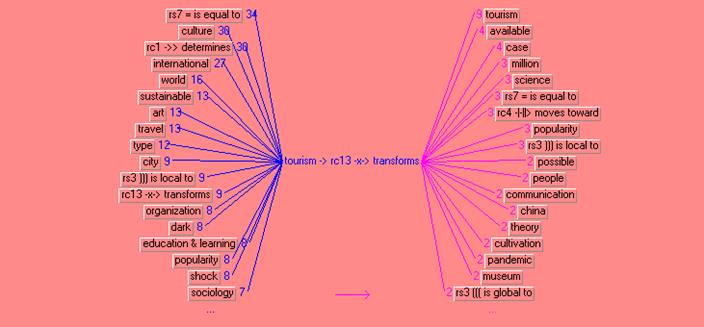
Figure 15 Antecedent and consequent concepts to a proposition including the concept “tourism” and relation “transforms”
This means that such center is itself hybridized, as it fusions a concept and a relationship into a partial proposition. Observe the frequencies of the antecedent and subsequent concepts in what concerns this new core idea. As for posterior terms, “tourism” may transform any one of them, for example, “people” and “communication”, or the “pandemic”.
Next, there are examples of the relationship “determination” in the considered corpus. The words in italic indicate the terms used in the English language of Wikipedia page on “COVID-19 Pandemic”:
(6) Reporting on March 24 2020, the Centers for Disease Control and Prevention (CDC) of the United States indicated The Who had provided two codes for Covid-19:
(30) The virus that caused the outbreak is known as severe acute respiratory syndrome coronavirus 2 (SARS-Cov-2).
(82) The death-to-case ratio reflects the number of deaths attributed to Covid-19 divided by the number of diagnosed cases within a given time interval ( … ) because comparisons of death rates before and during the pandemic show an increase in deaths, that is not explained by Covid-19 deaths alone.
(84) The CDC noted that (the National Center for Health Statistics (NCHS)) is not planning to implement U07. 2 for mortality statistics
Some illustrations of actual social language sentences, corresponding to these (socio)logical propositions within the Wikipedia page “Tourism”, are shown below. Again, the terms that connote the two terms found, mutually associated, inside the same propositions, are marked with italics.
(7) International tourist arrivals surpassed (“surpassed” is a word in the corpus indicating the “dialectical” or “transformation” relation) the milestone of 1 billion tourists globally for the first time in 2012.
(8) emerging (another word in the class “transformation”, in what regards tourism) source markets such as China, Russia.
(9) Basis International tourism over time, modern aviation has made it possible to travel long distances quickly.
(63) This form of tourism developed during the second half of the 19th century in the United Kingdom.
(65) Educational tourism is developed because of the growing popularity of teaching.
(106) Social tourism is making tourism available to poor people who otherwise could not afford to travel for their education or recreation.
(138) Tourism products and services have been made available through intermediaries
In addition, it might be interesting to research, as a network core idea, the hybridization between two relation-concepts (Figure 16).
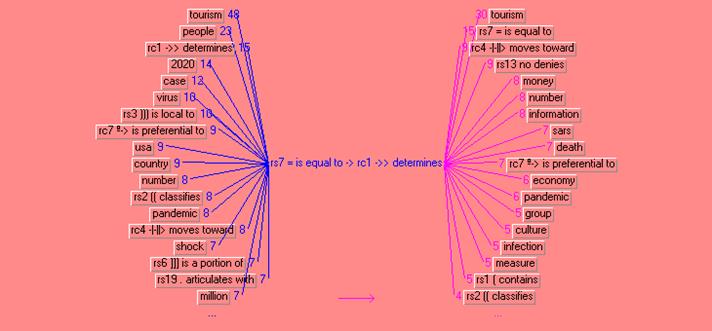
Figure 16 Prior and following concepts to relation “is equal to” hybridized with relation “determines”
For example, the association between, on one hand, the relation denominated “equality” (coded “rs7 = equal to”) and, on the other hand, the relation “determination” (coded “rc1 ->> determines”). Such connection between two relations is named “metarelation”. It is now possible to discover some frequent concepts, or other relation-concepts, connected with this new core idea within a semantic-logic network.
For such a purpose, one could retake the whole linguistic sentences of the corpus and the respective underlying logical propositions. As stated above, such propositions include anterior concepts (e.g., conditions, causes) and posterior concepts (consequences, effects, etc.) connected by one or more relationships. In what regards the anterior concepts inside all (socio)logical propositions inside the corpus, the more frequent mentions include “tourism” (48 times), “people” (23), “virus” (18), “pandemic” (eight), and so forth. And the impact of this meta-relation contains “sars”, “death”, “pandemic”, “infection”, among others.
Examples of this meta-relation in the corpus are presented below, found inside the Wikipedia page on “COVID-19 pandemic”. The relation “is equal to” is indicated in italics, and the relation “determines” is noted between quotation marks.
(179) Nevertheless, in the United States, two monoclonal antibody-based therapies are available for early use in cases “thought” to be at high risk of progression to severe disease.
(180) In 34% of cases (7,4% for those over age 65), symptoms are severe enough to “cause” hospitalization.
(190) health care must be available to “provide for” the needs of those infected.
(199) Contact tracing is an important method for health authorities to “determine” the source of infection.
(200) and as of April 7 2020, more than a dozen expert groups were working on privacy-friendly solutions such as “using” Bluetooth to log a user’s proximity to other in mandatory traveler information collection for use in Covid-19 contact.
(208) In Europe and the US, Palantir Technologies is also “providing” Covid-19 tracking services.
(210) in some areas, non-emergency healthcare services are being “provided” virtually.
Other citations with the meta-relation that hybridizes the relationship “is equal to” with relation to the connection “determines” are located within the Wikipedia page titled “Tourism”:
(60) Cultural tourism is one of the megatrends “reflected” in massive numbers of overnight stays and sales.
(80) Tourist destinations are shifting to low carbon emissions following the trend of visitors being more focused on being environmentally responsible, “adopting” a sustainable behavior.
(89) There is also the possibility of pro-poor tourism principles being “adopted”, within community tourism in Sierra Leone?
(91) and this is “reflected” in tourist numbers recovering some 6,6% globally over 2009, with growth up to 8% in emerging economies.
8. Conclusion
It would be possible to extend the HAD sociological hybrid hermeneutics about hybrid social processes via the above applied epistemological, theoretical, methodological and empirical perspectives. In fact, such a strategy is still in its early stage of development. Therefore, some previous and incomplete conclusions on the present study are the following: within an epistemological perspective, not only methods but everything in research could or should be, in some way, hybridized, at least partially. For instance, not just interdisciplinarity is pertinent nowadays; but clearer articulations among concepts and among theories as well; and also a more proficient fusion among research teams originary from dominant and alternative research cultures, for example, research teams native from both central and peripheral countries and societies.
From a theoretical perspective, web 3.0, and in particular social semantic sites such as Wikipedia, are objects of study relatively under-analyzed, despite the fact that Tim Berners-Lee (2000), the inventor of world wide web (the visual and graphic internet), has pointed out its core relevance and urgency for the clarification of digital social networks inherent phenomena.
Considering a methodological perspective, in order to interpret novel social processes, it is necessary not just to create innovative concepts but also to forge new methodologies. Using the alphabet, HDA represents only a possible contribution to it, albeit in a state of development and therefore naturally under continuous evaluation.
Anyway, as temporary results of this case study, the following is noteworthy: for the authors of the analyzed web pages discourses, among the subjects associated with COVID-19 and tourism, and taking into account the quantitative approach applied, the more relevant social phenomena dimensions are structural, registering 3,845 mentions. The number of references to “relationships” and to “social agents” is relatively similar, with 2,394 and 2,335, respectively. The frequency of societal “contexts” and “processes” is also very close. “Objects” and “practices” are the least social and sociological dimensions/levels present in the Wikipedia discourse.
As for a more qualitative approach, and revisiting the questions previously formulated, the core concepts that represent these social phenomena dimensions seem to belong to the “medicine and health” category related with “social agents” and to refer to “transport and travel” connected with “tourism”, which demonstrate the pertinence of their articulation. The more expressive social relations that articulate such concepts are “equality” inside structural relationships and “determination” within conjunctural relationships. Some of these are meta-relations, that is, social and sociological links that associate with other links. It is the case of “equal to”, related, in a first move, to “determines”, and both connected, in a second step, to several antecedent and posterior ideas, within the reticular discourse resident in Wikipedia pages about both “COVID-19 pandemic” and “tourism”, a social discourse partially deciphered via the sociological propositions proposed by HDA.











 texto em
texto em 


